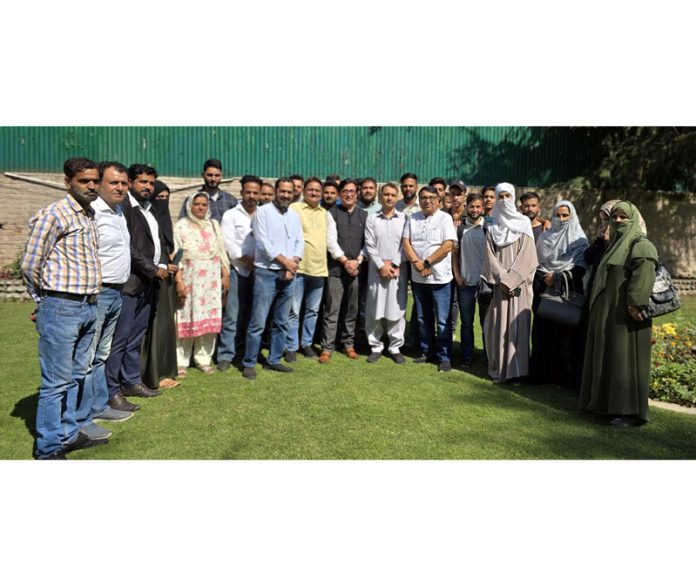They are not the internationally known Gee’s Bend quilts from rural Alabama, hailed by critics as miraculous works of modern art. Nor are they the equally famous quilts from the “Pattern and Paradox: The Quilts of Amish Women” exhibit that recently ended at the Smithsonian American Art Museum in Washington, D.C.
But, as with those quilts, the essence of fiber arts that have evolved from being just a cozy, handmade bed covering to artworks that tell a story, connect cultures and different generations is what makes “Sew-lano Quilts: A Pattern of Change” especially compelling to see and experience at the Vacaville Museum. The 40 to 50 pieces in the exhibit — curated by Caitlyn Moxon and continuing to Sept. 21 at the 213 Buck Ave.

venue, a center for Solano County history — gets its aesthetic charge from its inclusion of support and artifacts from several Solano County organizations, Clara Dawson, the newly named executive director, told The Reporter on Saturday morning. They range from individuals and the City of Dixon to a quilting group at the California Medical Facility and the Rio Vista Museum to the Museum of History Benicia. Just inside the one-room gallery, to the right as you enter, is something of a showstopper in itself: a poster-size black-and-white photo of a bemused Nancy Geary, a Black-American nurse born as a slave who eventually lived in Silveyville, near modern-day Dixon.
The artwork label that accompanies her delicate-looking, patchwork quilt indicated Geary acquired scraps of fabric from wedding dresses, costumes and evening gowns that became an artful hodgepodge in the early 1900s. A casual glance at it may suggest the kinetic energy of a Jackson Pollock drip painting that demands more viewing time. Geary reportedly knew the history of each piece of material used.
While those stories are lost, the quilt’s visual impact remains while informing and adding to the Geary biography and the quilting art. As much as the Geary piece fascinates, a visitor may want to stop for several moments at the exhibit entrance to view two pedal-driven Singer sewing machines and other models but especially linger at the sight of the Singer500a, aka “The Rocketeer.” Created as the American Space Age got underway in the early 1960s, the model lasting just a few years, it’s a sparely designed, futuristic wonder of all metal components.
(There’s no indication the sewing machine had a connection to the 1991 Disney movie of the same name.) Look to your right and there’s Catherine Bors’ “Canning Jars,” a wall-size grid of jars, in five rows and columns, with colorful ingredients — Brussels sprouts, blueberries, tomatoes, green peppers, jalapenos, avocados, figs and more — filling each one jelly bean-like. They are a type of eye candy, for sure, only created with colorful fabric, thread and a keen artistic mind.
A group of Solano women primarily, the Sewlano Fiber Artists Network make an appearance, their first group exhibit, with a piece or two and introduce their logo based on the Andrinka symbol: Boa Me Na Me Mnoa Wo, which means “Help Me Let Me Help You.” Quilter Mary Berry’s stunning “Making Music” depicts a Black musician, microphone in hand; Jeanette Robinson’s “Midnight Sun,” shows, according to the exhibit label, “what the sun would look like if it were up a midnight,” that is red-eyed and not too happy to be awake; Ora Clay’s “My Red Ball,” roughly 14 inches square, appears to show a female figure, in black-and-white, with a red ball in her left hand, a clever and striking use of color for attention-getting effect; and Teri Green’s “Brown-Eyed Beauty, 2024” shows a lovely Black woman with a blue-and-red head covering supporting what looks to be a mountainous crop of hair. “Treasure Map,” a group of angular geometric symbols in black against a primarily creamy green background, is worth stopping to stare at for a few moments because of its ingenious concept and abstraction, a welcome departure from the human form.
Another piece central to the exhibit is Lorraine Patten’s wall-size “Benicia Centennial Quilt, 1949,” on loan from the Museum of History Benicia. In some dozen or more 1-foot-square blocks, it depicts Paul’s Episcopal Church, the Old Mason Temple, the Salt Box House and more, including, the Benicia Clock Tower, St. Dominic’s Catholic Church, the Camel Barns and the Old Capitol.
In sum, it’s a pictorial history easy on the eyes as it charms. No surprise, the exhibit has a small section about the quilting process and the tools of the art, among them, spools of thread, shears, needles, measuring tape and a wrist pin cushion. Oh, and the sewing tin? It belonged to Vacaville teacher Eleanor D.
Nelson. At exhibit’s end, Moxon decided to hang what many consider the marquee exhibit: two pieces by inmates housed in the city’s two state prisons. Crocheting 4 Charity, a CMF group of 13 men who created “Change Time,” a quilt of four joined pieces that include 1) the Greek symbol Delta in yellow on navy blue, a math symbol to show change in a variable; a cocoon and butterfly in pink and white on green; a classic crochet pattern to honor the past; and a Solano County scene of hills and water.
Inmates in the California State Prison, Solano, working in the Occupational Mentor Certification Program, formed in 2008, created fiber art, the museum label reads, “to give back to their community and make amends while in recovery.” Almost childlike in its simplicity, the OMCP quilt, roughly 4 by 6 feet, is a parade of red, yellow, orange, black, brown, pink, turquoise, gray, white squares, each about 5 by 5 inches. It’s somewhat dizzying in its visual effect but clearly a heartfelt work.
The exhibit, while serious and edifying in nature, also includes a chance for visitor creativity: the Carol Shull Quilt Wall. It allows museumgoers to use provided fabric to create a quilt pattern by drawing inspiration from the displays to make something unique (which might prompt a smartphone selfie). As Dawson told The Reporter, “I like the freedom of what quilts represent.
” Major exhibit sponsors include Cloth Carousel, Kaiser Permanente, A-Tax Team, Bob and Denise Fracchia, and Recology. Regular museum hours are 1 to 4:30 p.m.
Thursdays and Fridays and 10 a.m. to 4:30 p.
m. Saturdays. Admission is free, but a suggested donation of $5 per person is encouraged.
For more information, visit www.vacavillemuseum.org.
.



















